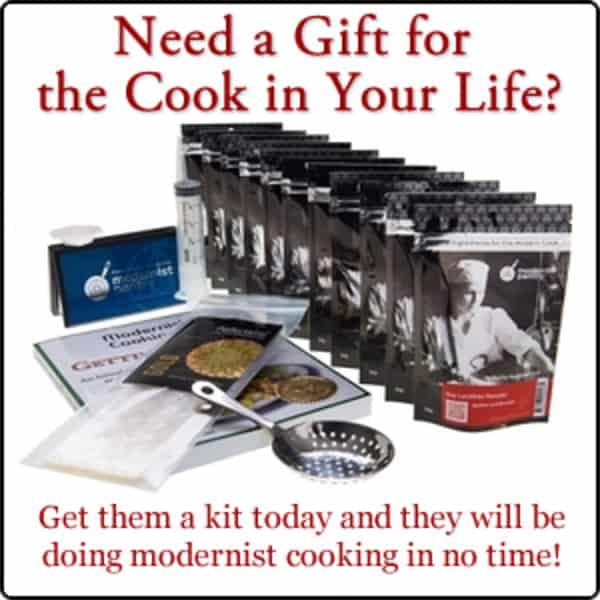 Written by Jason Logsdon
Written by Jason Logsdon
Where to Place Affiliate Links on a Food Blog
Click to discover how to serve your Fans and grow your incomeI think affiliate links are the second things bloggers turn to, behind only ad networks. Because they are often implemented so early, and by new bloggers, many times they aren't used as effectively as they could be.
I know when I got started I would throw in a bunch of "You can buy this now!" links in random places on my website and hope for sales. I definitely had some success, but I've found much more effective ways to do it now. My affiliate payouts have gone from a few hundred dollars a month, to often breaking a thousand or more. Here's a few of the areas I attacked to accomplish that.
Equipment or Ingredient Reviews

I found affiliate income really started to take off when I would use it in equipment or ingredient reviews. This is mainly because you are writing about a product, preferably one you like, and then provide links to purchase it. The review should have your audience's interests at heart, but if it is truly a product that would help them, sharing it with them is doing them a favor.
Our reviews range from 500 word "quick hit" reviews to 5,000 word super-in-depth reviews. They are all effective in their own right, and for some products we actually do both.
The affiliate link just needs to be displayed prominently at the top and bottom of the article, and sometimes sprinkled in throughout, if it is a longer review.
Getting Started or Resource Pages

A great place to add links is to a "Getting Started", "Resources", or "Recommend Equipment" page. These pages are built around sharing with the reader what you personally recommend for someone getting started in your niche and are a great place to link up to your favorite tools and ingredients.
Recipe Headnotes

Recipe headnotes are a great place for affiliate links to equipment or ingredients that are used in the recipe. They are especially effective for unique items or time-saving items. You don't need to have a big review, just a simple "When I need to pit cherries I like to use this [cherry pitter - link] to save time" is often sufficient.
Ingredient Lists
Another great place in recipes is in the ingredients list. Again, it only needs to be a simple link, like "1 cup oatmeal, preferably [Bob's Red Mill - link]". I try to only use this method once or twice at most per recipe, and only for unique items that people might not have on hand already.
Holiday Guides

A great seasonal place for affiliate links is a holiday guide, a gift guide based around a holiday, or a themed round up. These are all similar, and take the form "Christmas Gifts for the Home Chef", "10 Mother's Day Gifts", "8 Items for the Perfect 4th of July BBQ", etc. They usually consist of several products tied together by the theme of the article, with a short description of why they are worth getting and a link to buy them.
How To Guides
I have written many "how to" guides based around a piece of equipment or a certain ingredient that will contain affiliate links to buy it. Many people research equipment and ingredients before buying it, especially more expensive ones, and a non-salesy description of how it works and what they need to know can often push them over the edge to buy the item.
Tips for Affiliate Links
There are a few things to keep in mind that apply to all affiliate links.
Your Readers Trust You
Most of your affiliate sales will come because your readers trust you and will follow your recommendations. DO NOT ABUSE THIS! It can be tempting in the short term to try and boost your affiliate sales, but if you don't have your readers best interests at heart, then you will only be hurting yourself in the long run. This also applies to providing them with good content, not just a salesy page trying to hawk an item to them.
Stay Within Your Niche
You might find some high-paying affiliate products in other niches, but if there isn't overlap with your audience it won't be helping out your readers, and you'll generally be wasting your time. I try to stick within my niche, and only cover things that my readers would also enjoy.
Make Affiliate Links Obvious
Making it clear that your links are affiliate links not only builds trust with your audience, it is also the law. The chances of anything happening to you legally are small, but if it does it can be really, really bad. So be sure to put an obvious disclaimer at the top of any page with affiliate links so it is clear to your readers.

Some people even put a small disclaimer next to every link. Sharing with your audience that these links are affiliate links usually won't hurt sales any as your audience is often happy to help you make some money, especially when it costs them nothing.
Conclusion
Hopefully now you have a few ideas for how to apply affiliate links and get the most bang for your buck!
How do you effectively use affiliate links in your blog? Let me know in the Makin Bacon Facebook Group or the comments below.
 Hi, I'm Jason Logsdon! I'm an adventurous home cook and the head writer and photographer for Amazing Food Made Easy. I grew my income to 6-figures by focusing on serving my Fans by providing massive value, and I want to help you do the same.
Hi, I'm Jason Logsdon! I'm an adventurous home cook and the head writer and photographer for Amazing Food Made Easy. I grew my income to 6-figures by focusing on serving my Fans by providing massive value, and I want to help you do the same.














